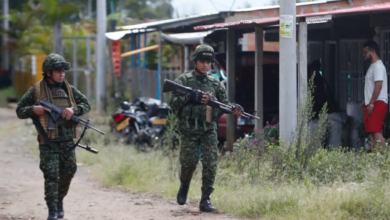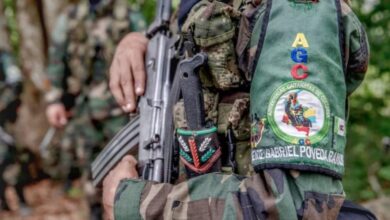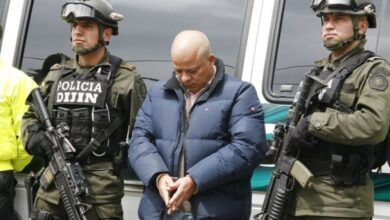Heritage Colombia: A Project To Safeguard The Country’s Natural Capital
Herencia Colombia (HeCo) is a project created within the framework of the United Nations Summit on Climate Change. As Colombia is one of the most biodiverse countries in the world, this initiative allows the country's fauna and flora to be protected in the long term with the help of the public and private sectors.

Photo: Pixabay
LatinAmerican Post | Daniel Alejandro Vergara
Listen to this article
Leer en español: Herencia Colombia: Un proyecto para salvaguardar el capital natural del país
With the arrival of the post-conflict in Colombia, the environmental challenges that both the government and civil society have to face have become more evident: illegal mining, monocultures, extensive cattle ranching, deforestation and over-exploitation of resources are just some problems that daily affect ecosystems, fauna, flora and the population of both cities and rural areas. Broadly speaking, HeCo has been created to finance the long-term National System of Protected Areas (SINAP), according to the National Natural Parks of Colombia: “this system is the set of protected areas, social actors and management strategies and instruments that articulate them, to contribute as a whole to the fulfillment of the conservation objectives of the country”.
The project is designed for cooperation and integration on multiple scales, both regional and local, as well as national and international. It is led by the Ministry of the Environment of Colombia and Natural Parks, according to information from these entities it also has the strategic support of Patrimonio Natural, the Gordon and Betty Moore Foundation, Conservation International (CI), Wildlife Conservation Society (WCS), Fondo World Wildlife Fund (WWF), the EU-FAO, the GEF-WB and the IDB.
According to the WWF: "The project seeks to ensure the long-term conservation and financing of 20 million hectares, increasing the coverage, effective management and governance of the National System of Protected Areas of Colombia (SINAP) and other conservation strategies." Some of the areas that have protected areas are the Central Andes, the heart of the Amazon, the Sierra de San Lucas, the Orinoco transition and the Caribbean Coast.
This project was socialized at the COP26 in Glasgow and something that could be highlighted was the absolute integration of the human factor in the processes of environmental protection. In other words, the project will not only finance the protection of territories, but also governance and innovation processes that allow the populations that live within these areas to have various tools for the protection, preservation, and recovery of ecosystems. This is proposed taking into account that historically the armed conflict has affected the environment, and that the peacebuilding processes during this post-conflict stage are closely linked to land ownership, territoriality and the various rural areas of the country.
We invite you to read: Indigenous Peoples Must Be Leaders In Conservation And Sustainability
Mr. Emigdio Pertuz, legal representative of the Cocomanorte Community Council, located in the Acandí Playona Fauna Sanctuary, told the WWF web portal that: “Colombian Heritage will contribute to the strengthening of the community councils, the declarations and the expansion of the areas protected, which means for us an effective and real contribution, which guarantees us survival in the territory, therefore, it guarantees our lives”.
Although the project was still in the structuring phase since 2015, on June 23, 2022, a financing agreement for 245 million dollars was signed between Colombia and allied organizations to strengthen SINAP. With this new step, the country is closer to meeting the 30 x 30 goal to which it committed itself internationally within the framework of the agenda set by the sustainable development goals. It is proposed that by 2030 Colombia will have 30% of its land territory and 30% of its maritime territory completely protected.
The financing agreement comes at a conjunctural moment, in which the climate crisis is putting the protection of the environment as an important point on world agendas. If the objectives set by HeCo are met, these funds would contribute to safeguarding about 10% of the world's biodiversity.
Carter Roberts, President and CEO of WWF-US, said: “This agreement is important because it will help fund the long-term protection of more than 32 million hectares of Colombia's most precious places. But it is also important because it charts a path forward for other nations to fund the protection of their own land and marine environments.”
Although the first phases of the project (financing and structuring) have represented a challenge, the truth is that the execution of this will be even more so. As of November 2021, SINAP reported 1,391 protected areas throughout the national territory, which both HeCo and its collaborators must continue to protect and manage strategies to expand their limits. In the same way, they have to establish governance processes that involve public and private entities together with the population, in which they reach common agreements on their diverse visions of the territory and the importance of preserving them.
For now, this project ranks as one of the few in Latin America and the world with so many actors involved and with that amount of managed resources. It is expected that by 2030 a good part of the initiatives will have been carried out in the regions of Colombia and that this will contribute to the protection of the environment at a global level.





